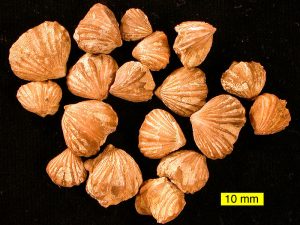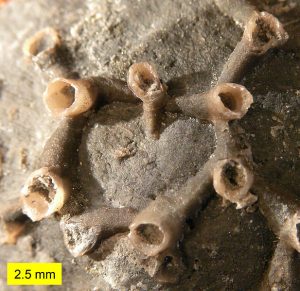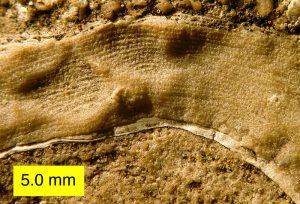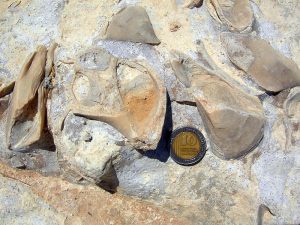We will likely have some more to say about cnidarians, so please review last week’s links.
You’re going to like brachiopods. They are considerably more complex than the cnidarians, are diverse in both habits and forms, and are the most common fossils in your field collections (for which you should definitely bookmark this Dry Dredger’s webpage on Cincinnatian brachiopods). I suggest starting your web reading with the Wikipedia page on brachiopods, followed by the brachiopod image page on the Paleontology Portal. (This last one is cool because you can select images from different geological periods.) You can also find an enormous number of brachiopod images and links on BrachNet, based in France. The Tree of Life website has a good section on the taxonomy and evolution of brachiopods. Here is a short video of living terebratulid brachiopods on the floor of Monterey Bay, California, and another of brachiopod larvae in Panama.
Brachiopod embryos are playing a role in our hypotheses about the origin of eyes. This is a good New York Times story, but it is tragically headlined: “In a Marine Worm’s Eyes, the Theory of Evolution”. Worm!! I do, though, like the description of one stage of the embryos called “swimming eyeballs”.
Here is a pdf version of the first 2016 Invertebrate Paleontology test you can use to prepare for the Big Event on Thursday, September 21. Remember that each class is different — there will be some items on this 2016 test that you did not have in your class.

Rhynchonellid brachiopods from the Ordovician of Indiana.
Geology in the News –
The remarkable Cassini spacecraft will have ended its existence with a planned crash into Saturn by the time you read this. What a spectacular project … and dramatic conclusion.
Portuguese Man-of-Wars in the news! Nothing exceptional — I just like these complex and dangerous hydrozoan colonies.
Here’s a good article about the hunt for soft tissue preserved in Cretaceous dinosaur bones. It is a complex story, and the initial findings have not been replicated in other labs. We may see developments here before the end of the year.




